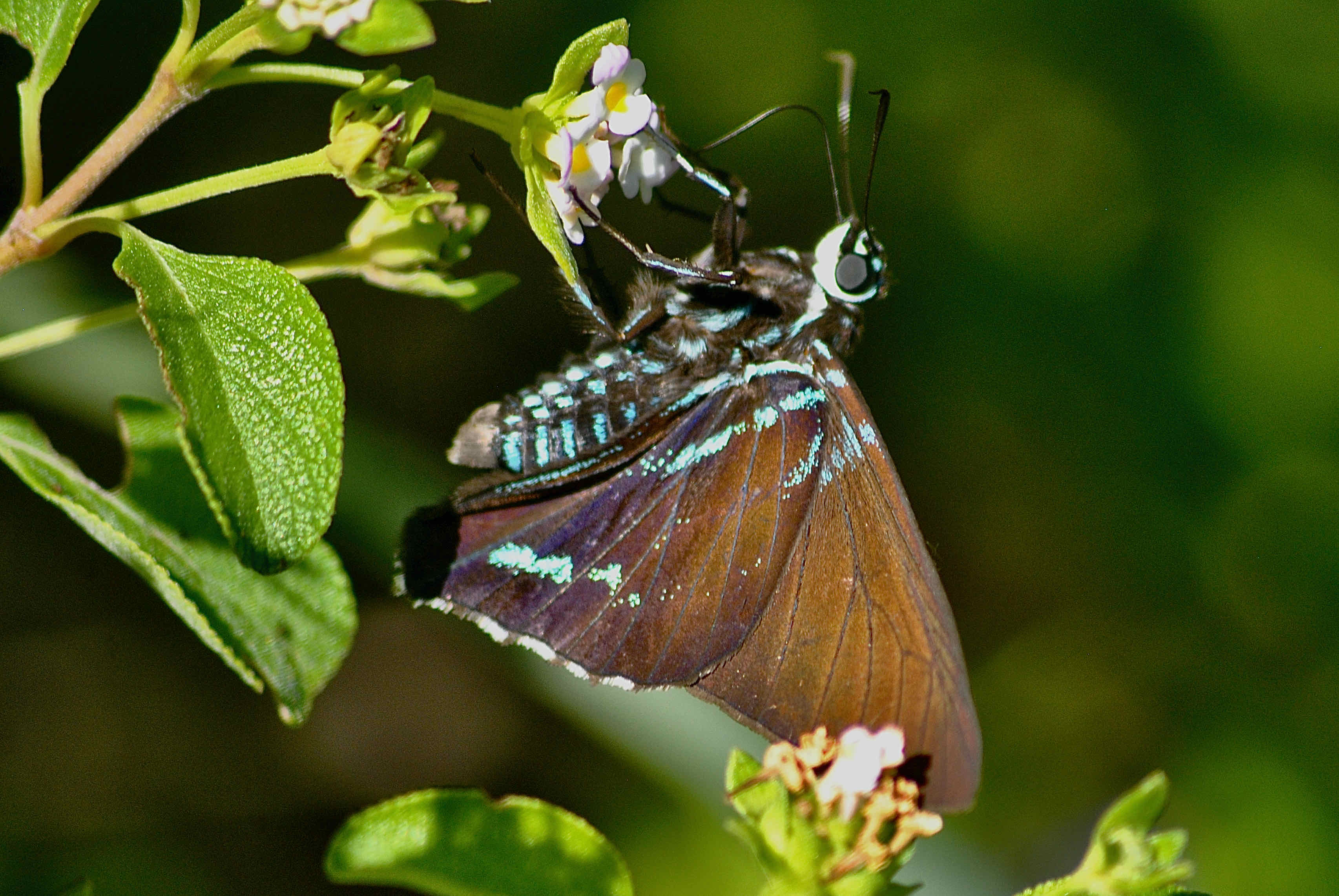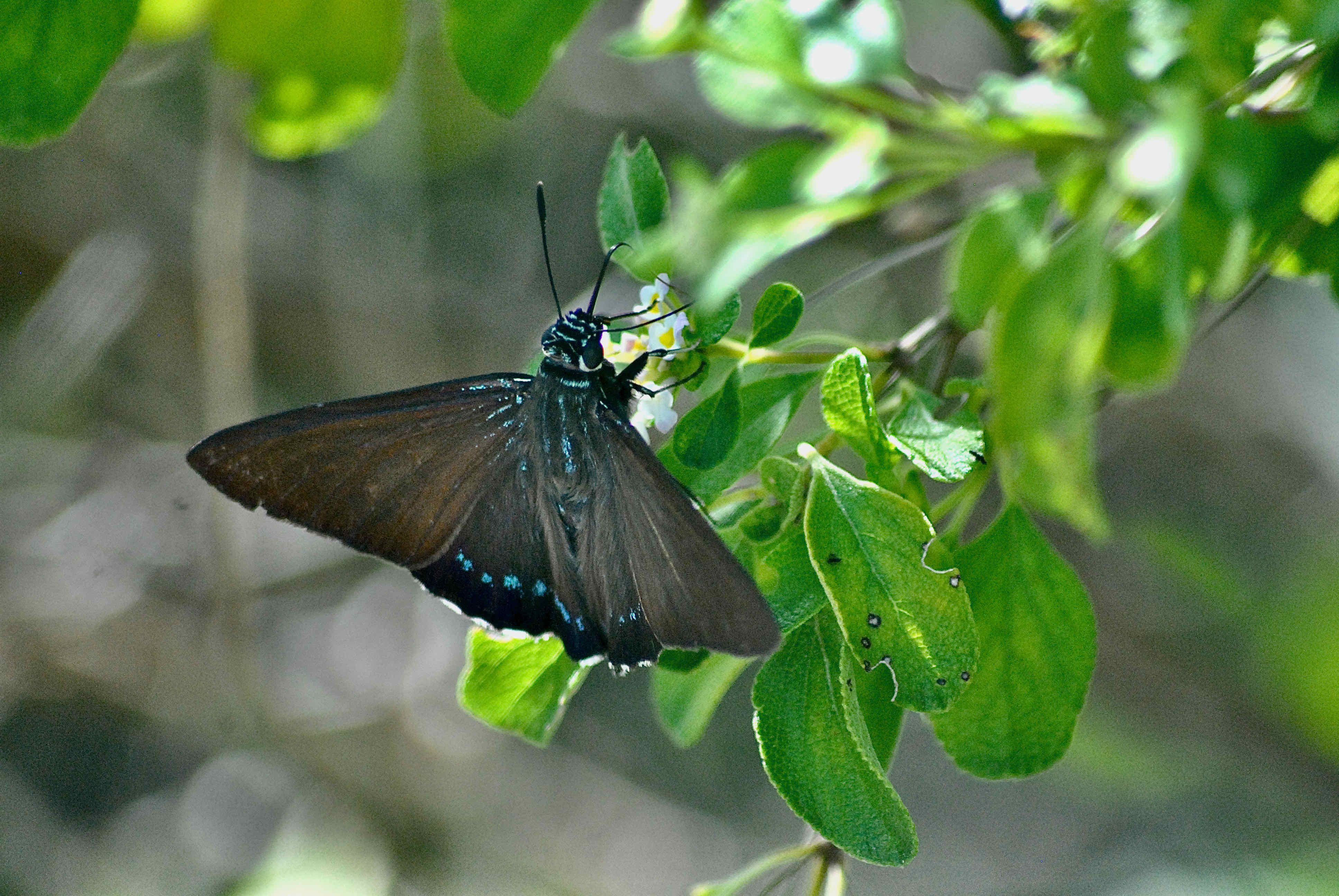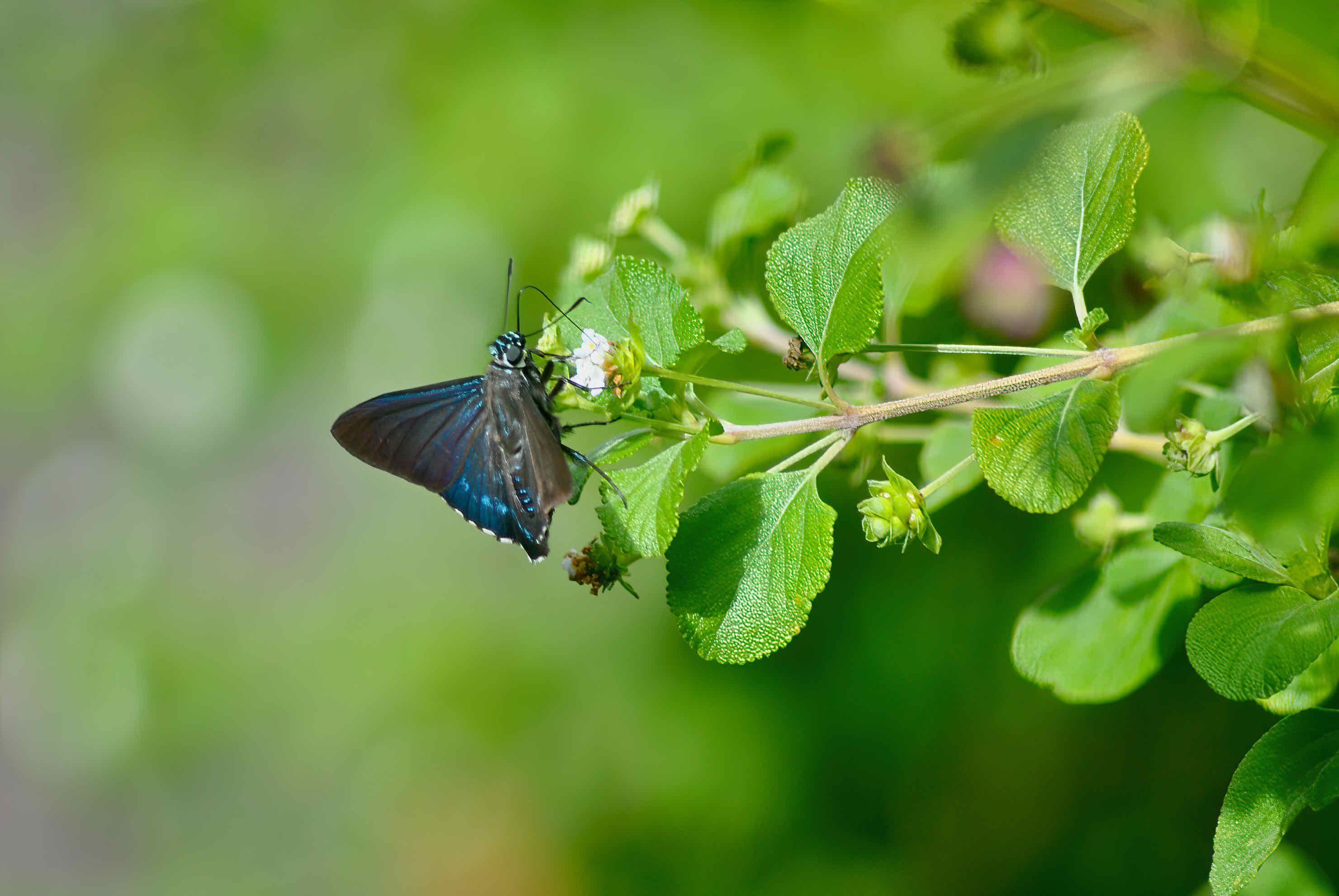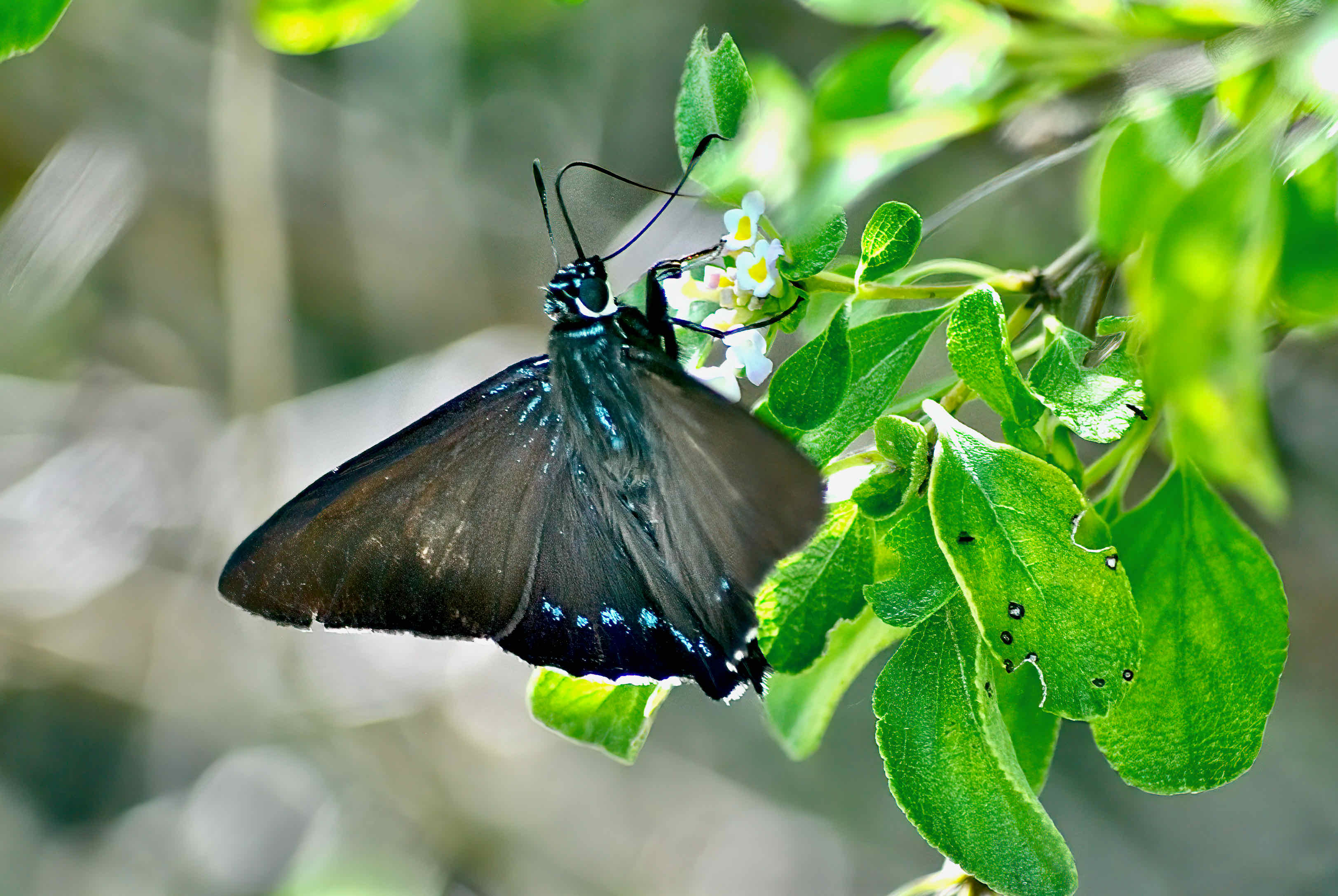
Mangrove skipper, photographed at Bahia Honda State Park, Bahia Honda Key, Monroe County, in December 2013.
Identifying most skippers — one of the major divisions in the world of butterflies — involves decoding spots, stripes or shades of brown. The mangrove skipper butterfly, Phocides pigmalion, is one of the exceptions. It is mostly dull brown, but the streaks of electric blue give it away like a neon sign.
The mangrove skipper is aptly named. It lives in and about mangrove forests, particularly where red mangroves, Rhizophora mangle, are abundant. The connection with red mangroves is vital — it is the only plant that the mangrove skipper uses as its larval host.
The connection also limits where the mangrove skipper lives, since red mangroves tend to grow in salt water habitats and are not cold tolerant. Check distribution maps for red mangroves and you're pretty much looking at the range of the mangrove skipper. In Florida, they're found along both coasts as far north as Volusia County on the Atlantic and, roughly, Pinellas County or a bit north, along the Gulf. Their range extends through the Caribbean, into Mexico, Central America and South America as far south as Argentina. Back here in the United States, mangrove skippers will stray occasionally into South Carolina. There are six subspecies of mangrove skippers; the Florida variety is known as P. pigmalion var. okeechobee.
It's fairly large as butterflies go, with a wingspan between two and three inches. The body is mostly a dull, blackish brown, but it has a white face and and electric blue dots and stripes about the head, thorax, abdomen and on the hind wing.
Butterflies and Moths of North America describes the mangrove skipper as a fast and powerful flyer. It doesn't migrate, and it's active in Florida year round. Adults will nectar on the flowers of mangroves, but they will sip also on Spanish needles, citrus trees, bougainvilla, and as shown in these photos, native lantana. Females will lay a single egg on the underside of a red mangrove leaf; the newly hatched caterpillar will build a shelter on the underside of a red mangrove leaf and begin to eat away until they're ready to metamorphose into the next phase of their lives.
BAMONA says the global mangrove skipper population is secure, but the Encyclopedia of Life says in the U.S., meaning Florida, the butterfly might be vulnerable to extinction, the reasons for which are unclear. Florida has lost much of its mangrove habitat, which obviously is problematic for the mangrove skipper, but the trees are now legally protected and efforts are being made to restore mangrove forests. An exotic predator might be at work, according to EOL.
Mangrove skippers are members of Hesperiidae, the skipper family.
Bahia Honda State Park



